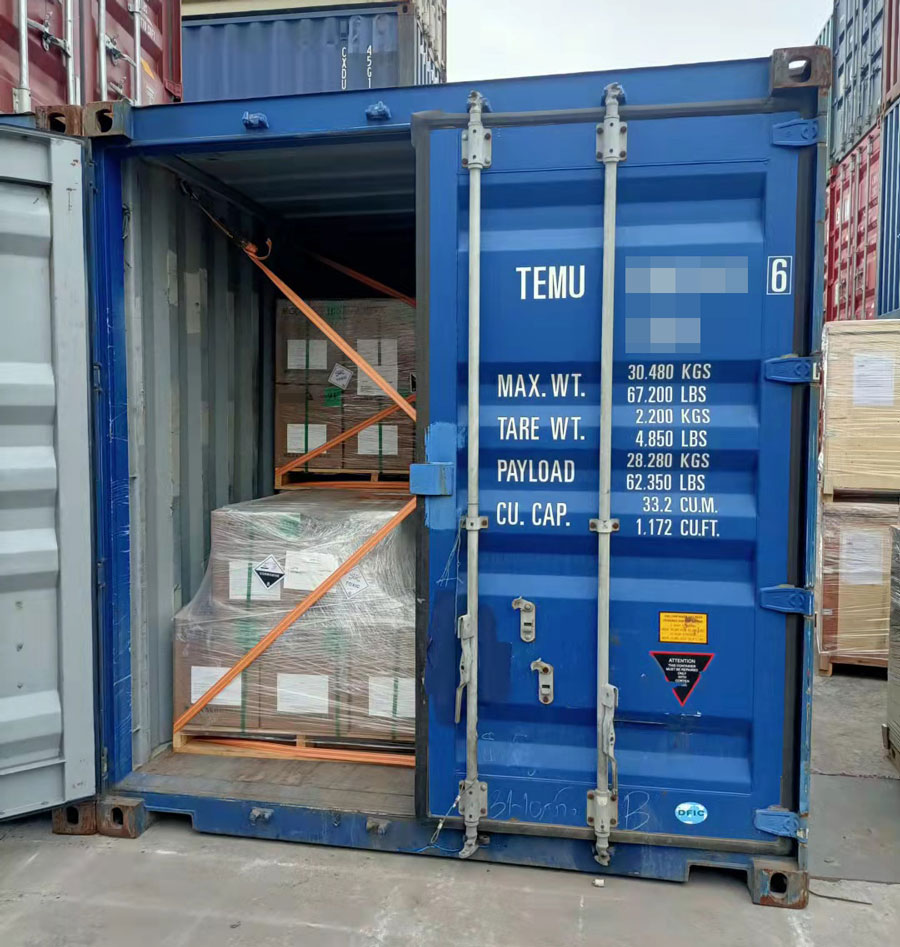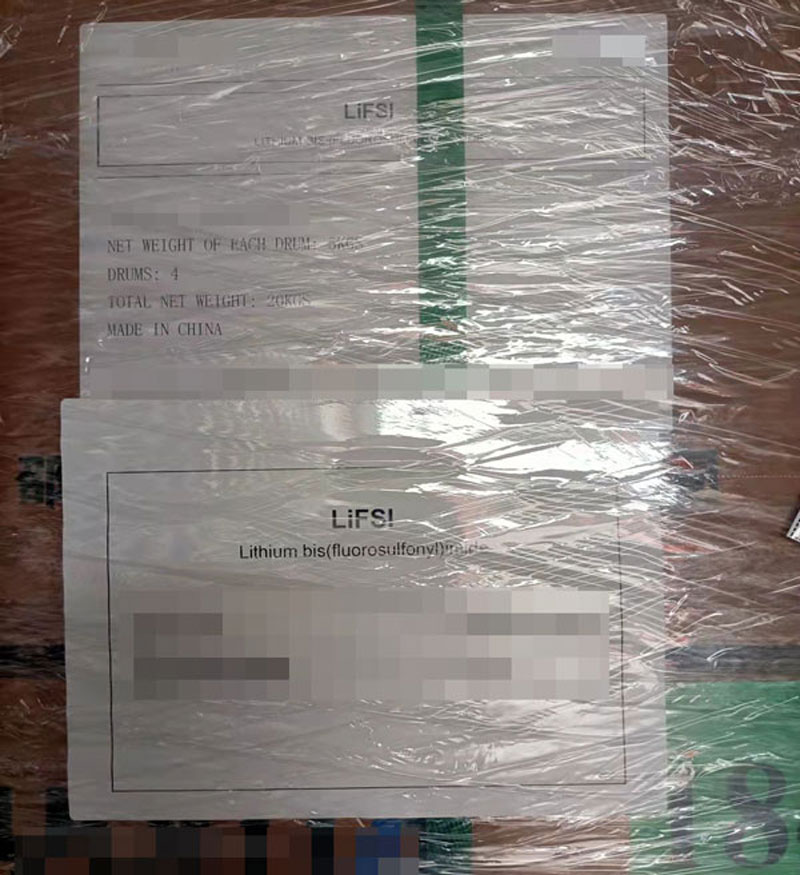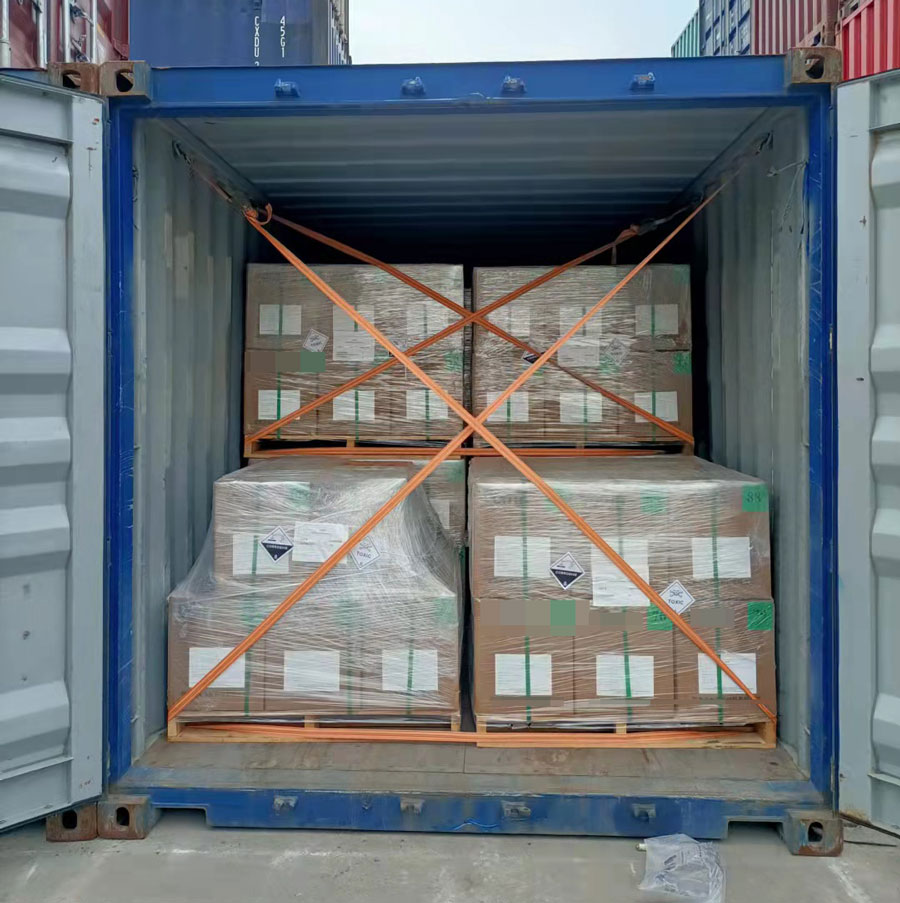

Difluorosulfonimide lithium dangerous goods declaration of the whole process of export
Lithium difluorosulfonimide (LiFSI), as a high-performance electrolyte additive and electrolyte, is widely used in lithium batteries, supercapacitors and other fields. Its excellent electrochemical properties and thermal stability make it an important part of the field of new energy materials. Due to its corrosive properties, lithium difluorosulfonimide is classified as a major danger category 8 and a secondary danger category 6.1 (corrosive solid, toxic, not otherwise specified, UN2923), which has strict requirements and specifications for its maritime export operation. In this paper, Sungreen Logistics will focus on the maritime export operation of difluorosulfonimide lithium, from the aspects of dangerous goods declaration data, transportation and storage requirements and common operation misunderstandings, and suggest collection.
1. Dangerous package Certificate
As a necessary document for the export of dangerous goods, the hazardous bag certificate proves that the packaging meets the requirements of the International Hazardous Code and can effectively prevent the goods from leaking or causing other hazards during transportation.
Detailed list of product physical and chemical properties, health hazards, first aid measures, fire measures, leakage emergency treatment and other information, is the customs, shipping companies and recipients of the key basis for audit.
3. Dangerous Goods declaration form
The declaration form should be filled with the accurate UN number (UN2923), the correct shipping name (corrosive solid, toxic, not otherwise specified), class (8+6.1) and other information.
4. Packing list, invoice, contract
Conventional trade documents, packing lists need to list the quantity of goods, packaging methods and other information, commercial invoices need to indicate the value of goods, transaction terms, etc., for customs clearance and cost settlement.
5. Export license
Some countries or regions may require additional export licenses, which need to be confirmed and processed in advance.
| Transport and storage requirements for lithium difluorosulfonimide
1. Storage requirements
The storage environment should be kept dry, ventilated and within a temperature range of 2-8°C to reduce the risk of corrosion and chemical reactions. In addition, the storage warehouse must be equipped with anti-corrosion facilities, and it is recommended to store it under the protection of inert gases (such as nitrogen) to prevent adverse reactions with oxygen or moisture in the air. At the same time, the storage area should be clearly marked with warning signs.
2. Transportation needs
Because lithium difluorosulfonimide is a corrosive substance, the packaging must use corrosion resistant packaging that meets international standards, such as steel drums or plastic drums lined with plastic bags, to ensure that the packaging is well sealed. On the outside of the package, the label of 8 dangerous goods, the UN number (UN2923) and the correct shipping name should be clearly marked. And shall not be mixed with Class 4 dangerous goods (flammable solids) to avoid chemical reactions.
| Easy to step pit in lithium difluorosulfonimide export operation
Just recently, a Baozi contacted us, saying that he had encountered problems in the operation of exporting lithium difluorosulfonimide, and hoped that we could help him solve the current problem. To this end, Shun Xin logistics listed several of the most easy to step on the pit.
1. Delay in filing
Dangerous goods declaration should be carried out in advance. It is generally recommended to complete the preparation and submission of all declaration materials at least one week before the shipment date to avoid the shipment delay caused by incomplete information or failure to pass the audit. At the same time, it is necessary to pay close attention to the audit progress of the declaration system and timely deal with the problems arising in the audit process.
2. Booking time is tight
Dangerous goods booking is often more complicated than ordinary goods, need more time in advance (generally recommended at least two weeks in advance) to communicate with the dangerous goods forwarder and confirm the shipping space, in order to avoid the shortage of shipping space caused by the export obstruction.
Dangerous goods shall be sent to the designated dangerous goods warehouse for security check and packing in advance, and the warehousing time shall strictly follow the shipping company's cut-off time, which usually needs to be completed 3-5 days before the shipment date to avoid missing the shipment plan. Note that entering the warehouse too early may incur additional storage costs, while being too late may cause the goods to be unable to be packed and collected in time, affecting the shipment date.
Before the goods enter the warehouse, it is necessary to ensure that the packaging is intact and the label is clear to avoid being rejected by the warehouse due to packaging problems. Any packing defects or non-compliance with IMDG requirements may result in refusal of shipment.
5. The file information is consistent with the product name
It is important that the goods information (such as UN number, item name, packing method, etc.) in the declaration form, MSDS, dangerous bag certificate and other documents be completely consistent, as any inconsistency may result in failure of declaration or customs inspection.
6. Ignoring the special requirements of the port of destination
Different countries and regions have different regulations on the import of dangerous goods, and it is necessary to understand and comply with the special requirements of the destination port in advance, such as additional import permits, specific packaging requirements, etc. This can find a professional dangerous goods forwarder to assist.
7. The transportation and storage conditions do not meet the requirements
In the process of transportation and storage, the temperature and packaging conditions should be strictly controlled in accordance with the requirements. Any negligence may lead to deterioration or danger of the goods.
As a professional dangerous goods international freight forwarders, Sungreen Logistics has rich experience in the international logistics of dangerous goods, and can provide customers with one-stop solutions from dangerous goods declaration, dangerous bag certificate agent, commodity inspection agent, dangerous goods booking, packaging, transportation and dangerous goods storage. If you have any questions or needs, please feel free to contact us.

1. Dangerous package Certificate
As a necessary document for the export of dangerous goods, the hazardous bag certificate proves that the packaging meets the requirements of the International Hazardous Code and can effectively prevent the goods from leaking or causing other hazards during transportation.

Detailed list of product physical and chemical properties, health hazards, first aid measures, fire measures, leakage emergency treatment and other information, is the customs, shipping companies and recipients of the key basis for audit.
3. Dangerous Goods declaration form
The declaration form should be filled with the accurate UN number (UN2923), the correct shipping name (corrosive solid, toxic, not otherwise specified), class (8+6.1) and other information.
4. Packing list, invoice, contract
Conventional trade documents, packing lists need to list the quantity of goods, packaging methods and other information, commercial invoices need to indicate the value of goods, transaction terms, etc., for customs clearance and cost settlement.
5. Export license
Some countries or regions may require additional export licenses, which need to be confirmed and processed in advance.
| Transport and storage requirements for lithium difluorosulfonimide
1. Storage requirements
The storage environment should be kept dry, ventilated and within a temperature range of 2-8°C to reduce the risk of corrosion and chemical reactions. In addition, the storage warehouse must be equipped with anti-corrosion facilities, and it is recommended to store it under the protection of inert gases (such as nitrogen) to prevent adverse reactions with oxygen or moisture in the air. At the same time, the storage area should be clearly marked with warning signs.
2. Transportation needs
Because lithium difluorosulfonimide is a corrosive substance, the packaging must use corrosion resistant packaging that meets international standards, such as steel drums or plastic drums lined with plastic bags, to ensure that the packaging is well sealed. On the outside of the package, the label of 8 dangerous goods, the UN number (UN2923) and the correct shipping name should be clearly marked. And shall not be mixed with Class 4 dangerous goods (flammable solids) to avoid chemical reactions.
| Easy to step pit in lithium difluorosulfonimide export operation
Just recently, a Baozi contacted us, saying that he had encountered problems in the operation of exporting lithium difluorosulfonimide, and hoped that we could help him solve the current problem. To this end, Shun Xin logistics listed several of the most easy to step on the pit.
1. Delay in filing
Dangerous goods declaration should be carried out in advance. It is generally recommended to complete the preparation and submission of all declaration materials at least one week before the shipment date to avoid the shipment delay caused by incomplete information or failure to pass the audit. At the same time, it is necessary to pay close attention to the audit progress of the declaration system and timely deal with the problems arising in the audit process.
2. Booking time is tight
Dangerous goods booking is often more complicated than ordinary goods, need more time in advance (generally recommended at least two weeks in advance) to communicate with the dangerous goods forwarder and confirm the shipping space, in order to avoid the shortage of shipping space caused by the export obstruction.

Dangerous goods shall be sent to the designated dangerous goods warehouse for security check and packing in advance, and the warehousing time shall strictly follow the shipping company's cut-off time, which usually needs to be completed 3-5 days before the shipment date to avoid missing the shipment plan. Note that entering the warehouse too early may incur additional storage costs, while being too late may cause the goods to be unable to be packed and collected in time, affecting the shipment date.

Before the goods enter the warehouse, it is necessary to ensure that the packaging is intact and the label is clear to avoid being rejected by the warehouse due to packaging problems. Any packing defects or non-compliance with IMDG requirements may result in refusal of shipment.
5. The file information is consistent with the product name
It is important that the goods information (such as UN number, item name, packing method, etc.) in the declaration form, MSDS, dangerous bag certificate and other documents be completely consistent, as any inconsistency may result in failure of declaration or customs inspection.
6. Ignoring the special requirements of the port of destination
Different countries and regions have different regulations on the import of dangerous goods, and it is necessary to understand and comply with the special requirements of the destination port in advance, such as additional import permits, specific packaging requirements, etc. This can find a professional dangerous goods forwarder to assist.
7. The transportation and storage conditions do not meet the requirements
In the process of transportation and storage, the temperature and packaging conditions should be strictly controlled in accordance with the requirements. Any negligence may lead to deterioration or danger of the goods.

As a professional dangerous goods international freight forwarders, Sungreen Logistics has rich experience in the international logistics of dangerous goods, and can provide customers with one-stop solutions from dangerous goods declaration, dangerous bag certificate agent, commodity inspection agent, dangerous goods booking, packaging, transportation and dangerous goods storage. If you have any questions or needs, please feel free to contact us.





